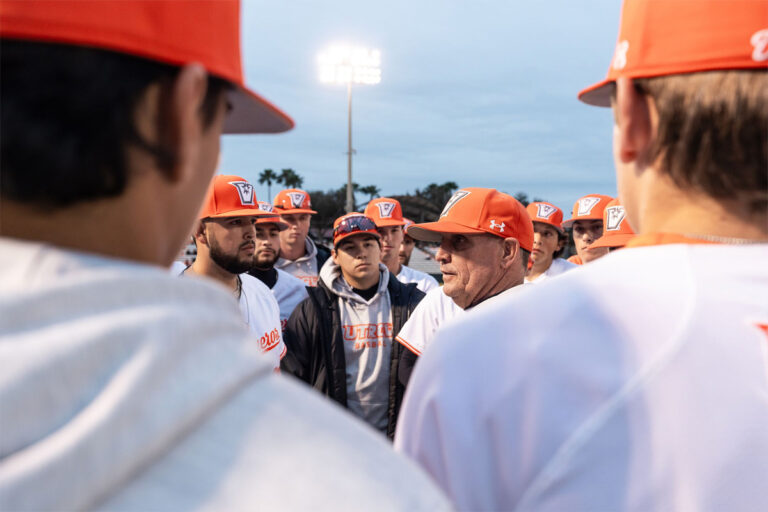After you park near the UTRGV Fieldhouse on the Edinburg campus, walk down the scenic path surrounded by an archway of trees lining the concrete and turn to the right, you’ll find the 60-year-old H-E-B Planetarium amidst a beautiful courtyard in the middle of the campus’ Science Building.
I’ve been to the planetarium twice before. Once was when I was in elementary school for a field trip to tour legacy institution University of Texas-Pan American, though that memory is faint now. The second time was two years ago, a few months after I first stepped foot on my campus after I spent my first year studying remotely due to the pandemic.
After reopening in 2008, the planetarium offers educational services to students, faculty and staff of the university and the public as well.
I figured it had been too long since my last visit and that it was time to return to learn what exactly it had to offer.
I walked into the building and was asked to sign in before entering the dome to watch a movie.
We started with viewing what the sky looked like at that time. I saw which planets and constellations were visible that evening.
While speaking to a planetarium employee, I learned each set of constellations are referred to differently depending on the sky culture, which is influenced by where you are from or what you might believe in. A sky culture defines constellation names, formations, art and more.
From the 28 cultures, I found that I am most familiar with the Western sky culture.
It was alluring to see the images that related to the constellations in our sky and how each sky culture views them differently.
I thought it was impressive that they have a program that projects what constellations or planets would be visible at the time of your choosing.
After viewing what constellations were visible that evening, I decided it was time to view a movie.
The planetarium has a catalog of 25 movies, all averaging 20 minutes, with some available in Spanish. At the attendees’ request, you can come in for free to watch and learn about planets, black holes, dinosaurs and much more.
Of the assortment, I chose the movie “Oasis in Space.”
The 24-minute movie dove into the distinct characteristics of each planet of the solar system. It takes its viewers on a journey through the universe and galaxy and into our solar system as it searches for the key ingredient: water.
“Oasis in Space” is one of the few movies available in Spanish.
On Tuesdays, from sundown to 10 p.m., all are welcomed to participate in its telescope observations by the campus sundial, east of the Science Building or behind the Fieldhouse, weather permitting. It is recommended to call ahead at 665-7088 to ask if the planetarium will host the observations on poor weather days.
The H-E-B planetarium is open 8 a.m. to 5 p.m. Monday through Friday and extends its hours to 10 p.m. on Tuesdays.
For more information, visit its webpage at www.utrgv.edu/planetarium or its instagram, @planetarium_utrgv, to stay updated on hours of operation and events.










